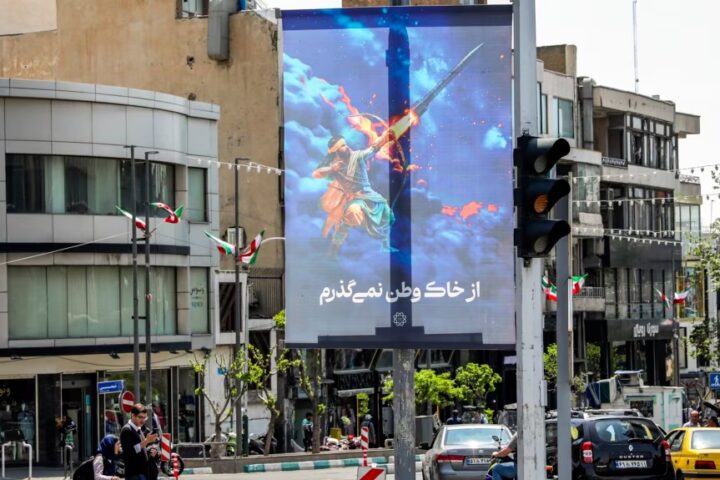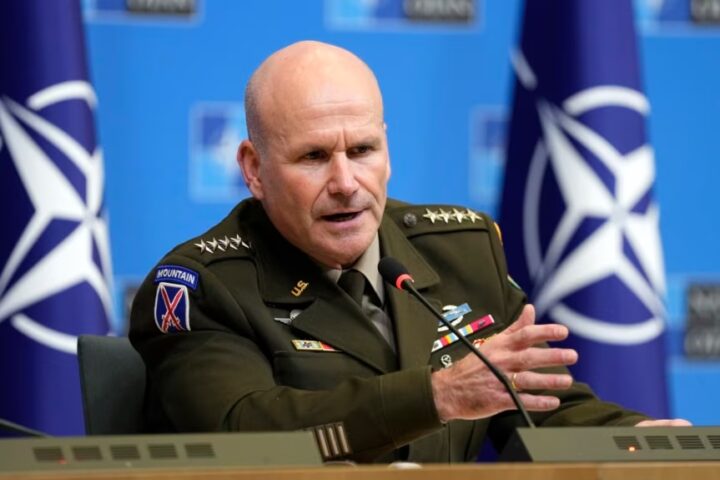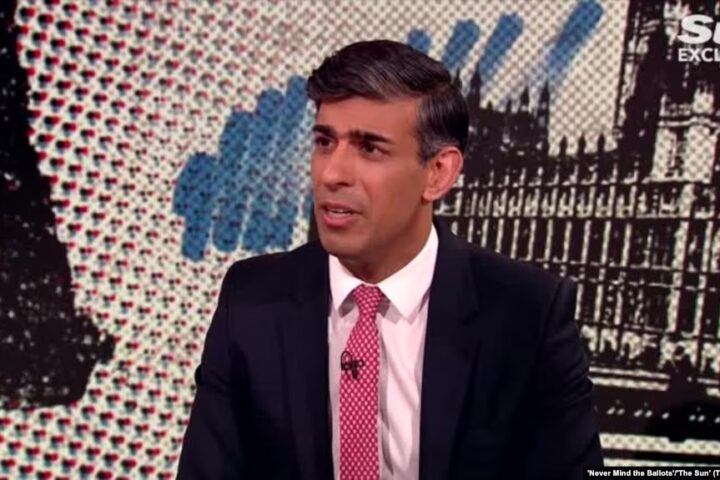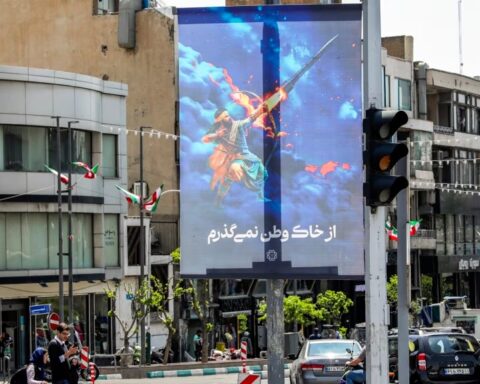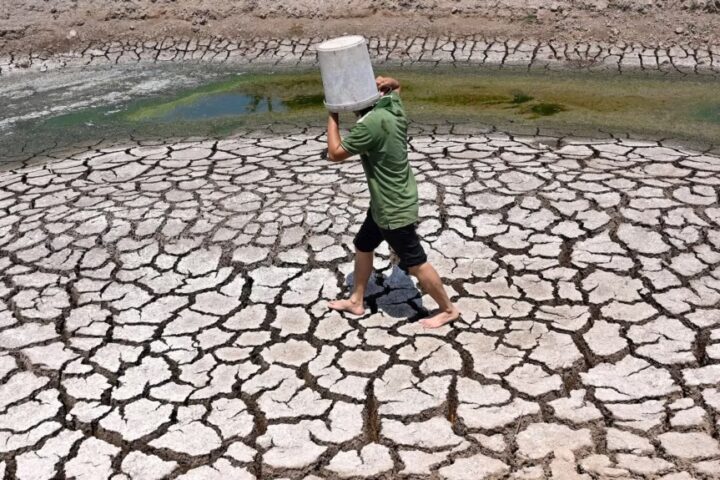In the Ukrainian city of Chasiv Yar, few residents are left.
Located close to the front lines where heavy fighting is under way in the Donetsk region, more than nine months of war has seen many flee the fighting for safer surroundings, while the near-constant fighting has taken a heavy toll on the civilians who stayed.
For Oleksandr, an elderly resident of the city who asked to be identified by only his first name, the time has finally come to evacuate from his home and get some distance from the round-the-clock shelling that has become a defining feature of the conflict.
“They shoot here every day. Day and night,” he told Current Time, a Russian-language network run by RFE/RL in cooperation with VOA.
Located less than 20 kilometers west of the city of Bakhmut, the strategic site of intense fighting between Russian and Ukrainian forces, Chasiv Yar had a prewar population of 12,500 people, although regional officials now estimate that the city has dwindled considerably, with mostly elderly residents who were unable to or reluctant to leave remaining.
Oleksandr says he plans to live with a niece in Ukraine’s Zaporizhzhya region, which is also home to fighting and partly occupied by Russian forces, but will provide a better buffer from the front lines.
In Donetsk, the fighting has accelerated following Russia’s retreat from the city of Kherson in southern Ukraine in November, leaving Kyiv with few options for its next big push to keep recapturing territory. Moscow has since looked to dig in and focus on securing all of Luhansk and Donetsk regions — with battles raging around Bakhmut — while holding on to territory captured in Kherson and Zaporizhzhya.
For Hrihoriy, a volunteer driver for the NGO Vostok SOS, who has been evacuating remaining civilians by bus from frontline towns and villages in Donetsk, this means that it has become even more dangerous to get residents out.
“It’s scary. Only the dead are not afraid,” said Hrihoriy, who asked that his last name be withheld for security reasons. “Nobody needs a dead [driver]. As long as we are alive, we can help.”
The New Battle Lines
With fighting raging in eastern Ukraine, attention is also shifting to the war’s southern front in Zaporizhzhya, where Ukrainian forces are eager to sever the so-called “land bridge” connecting the mainland to the Crimean Peninsula, which Moscow forcibly annexed from Kyiv in 2014.
Kyiv appears intent on liberating new territories over the winter and is focused on cities like Melitopol and Enerhodar, which have been under Russian occupation since the early days of Moscow’s February 24 invasion.
If Ukrainian forces were to continue to push south toward the Azov Sea, they could successfully cut off Russia’s land bridge, thereby severing a vital supply route and delivering a symbolic and strategic blow.
Questions remain, however, over Ukraine’s currently available troops and ammunition following its push into Kherson.
Likewise, Russian forces have withdrawn into more fortified defensive positions in anticipation of a Ukrainian advance.
WATCH: After Ukrainian troops retook large parts of the Kherson region from Russian forces, officials began the work of investigating military and civilian deaths and removing mines and booby traps from the area.
Oleh Buryak, the head of the Zaporizhzhya regional administration, told Current Time that Ukrainian intelligence confirmed that Russian forces are building fortifications on occupied territory and mining fields and other rural areas around strategic cities.
“[Russian troops] are not withdrawing [from Zaporizhzhya],” Buryak said. “We can see that there is a rotation of troops and movement from areas deemed less important to ones that are more [vital].”
Should Ukrainian forces launch another counteroffensive, they would face a growing list of challenges that analysts say would make for a costly and grinding advance, even by the tough standards of the Ukraine war.
By pulling back, Russian forces have increased their density and are taking up defensive ground after redistributing troops to eastern Ukraine and boosting their presence in Zaporizhzhya following Kyiv’s advance on Kherson city.
Weather and geography are also factors, with autumn rains and a wet early winter providing for muddy conditions that could logistically hamper any potential offensive.
Ukraine’s Winter War
Vladyslav Seleznev, a former spokesman for the Ukrainian General Staff, told Current Time that it was clear that Russian troops are moving to more advantageous positions, but that statements by Ukrainian defense officials about a deeper push into Zaporizhzhya could be part of a tactic to distract Russian forces.
Despite growing speculation, there is limited evidence in terms of troop buildup that Kyiv is planning to mount an offensive there soon.
Such a move would not be without precedent. During the summer, attention was centered upon a Ukrainian counteroffensive in Kherson, but Kyiv instead made an unexpected push in Kharkiv in northeastern Ukraine.
With the fall of Mariupol — a strategic port city in the Donbas — in May, the Kremlin secured its sought-after land bridge, but it has since suffered a string of humiliating military reversals that have halted its momentum on the battlefield.
Moscow organized what it called referendums for absorbing Donetsk, Kherson, Luhansk, and Zaporizhzhya and declared on September 30 that they were now part of Russia, despite large sections of territory in the Ukrainian regions not being controlled by Russian troops.
Seleznev said that Russian forces were focused on maintaining the land bridge and are trying to “create the prerequisites” to do so currently with their troop movements as new battle lines emerge in the war.
In Zaporizhzhya, meanwhile, Ukrainian troops look to be waiting for conditions to shift until they can make a larger push.
“Ukrainian forces will wait for a time when the frosts come and freeze the fields so that equipment can advance,” Seleznev said. “How soon this happens will ultimately depend on the weather.”



